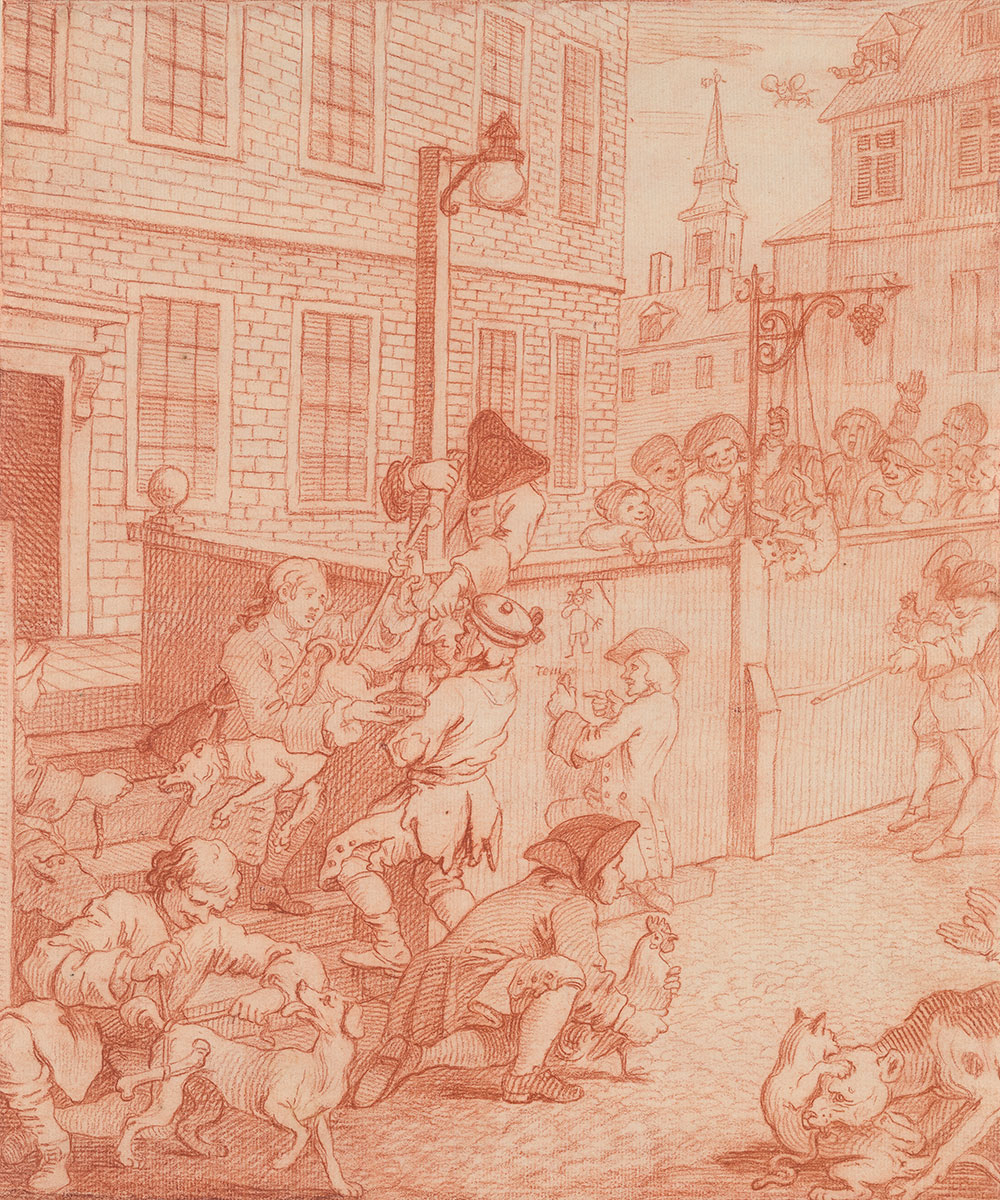
Here we meet the youthful protagonist of the Stages of Cruelty series, Tom Nero. An orphan lacking parental guidance, Nero ignores the well-dressed boy offering him a tart and continues sodomizing a dog with the pointed end of a cudgel as his mates hold the hound in place. All around them, other children demonstrate this nascent stage of cruelty: tying a bone to a dog’s tail, staging a cock-throwing contest, and hanging two cats by the tail. The animals also turn on each other, and a dog disembowels a cat in the foreground. Eerily hinting at Nero’s fate, another child labels his hangman drawing Tom. Working on this drawing after the study shown to your left, Hogarth adjusted the scale of the figures relative to their setting and made other refinements to the composition in preparation for the print.
William Hogarth (1697–1764)
First Stage of Cruelty
1750–51
Red chalk; incised with stylus; verso rubbed with red chalk for transfer.
Purchased by Pierpont Morgan (1837–1913) in 1909.
The Morgan Library & Museum, III, 32b.
Jennifer Tonkovich:
As you look at the drawings and prints for the first two Stages of Cruelty, you'll notice various appalling acts of violence being committed against dogs, cats, horses, bulls, roosters, birds, donkeys, and sheep. In the third stage, the protagonist, Tom Nero, has moved on to a human victim. But what do these scenes of brutality to animals tell us about Hogarth and animal welfare in the 1750s in London? And was Hogarth's claim that he made this series in hopes of preventing that cruel treatment of poor animals, which makes the streets of London more disagreeable to the human mind than anything whatever, actually effective?
Hogarth had his own companion animals, most famously a pug from whom he was inseparable for a decade, and which earned him the derisive nickname Painter Pug. Others shared Hogarth's concern for animals as occasional resistance to public spectacles of animal cruelty arose in London, but sports such as bear and bull baiting, dog fighting, cock throwing, and the abuse of livestock were not addressed by legislation until the early 19th century.
This period saw the origins of a pro-animal welfare movement with greater representation of animals, primarily dogs, and their capacity as pets to first aristocratic and then middle-class families. And so Hogarth could reasonably assume to stoke sympathy for the sodomized dog in the first stage of cruelty and condemnation of the boy tyrant attacking her. The return of the dog in the fourth stage, now feasting on the boiled heart and innards of her tormentor, cleverly reminds us that animals have a story too.
